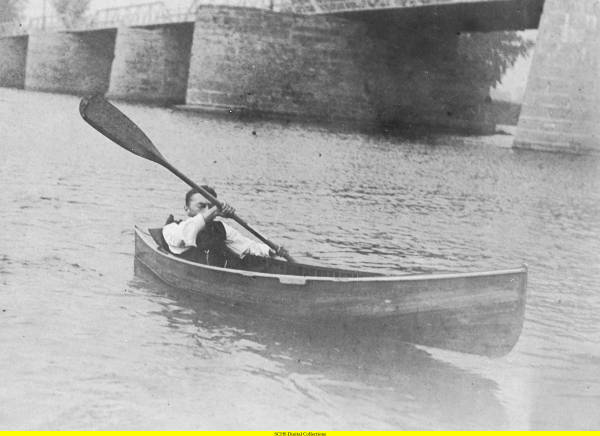
If for any reason we ever felt the stirring need to rename Schenectady, the name of Steinmetz wouldn’t be a bad choice. There was hardly anyone who figured more in its industrial success, or who provided more groundbreaking research, academic enlightenment, or civic leadership. He was the paradigm of immigrant success, and a striking advocate of the active physical life despite tremendous physical limitations.
Charles Proteus Steinmetz (born Carl August Rudolph Steinmetz) was born in Breslau, in the Prussian province of Silesia, in 1865. He carried a familial set of deformities, including dwarfism, hunchback, and hip dysplasia. He was brilliant in mathematics and physics, and had nearly completed his doctorate in 1888 when his socialist activities drew unwelcome attention in the new German Empire. Facing possible arrest, he fled to Switzerland and then came to the United States in 1889, going to work for an electrical transformer manufacturer in Yonkers. He adopted the name Charles, which he thought more American, and the middle name Proteus, a crafty oracle from Homer’s Odyssey. He became recognized internationally as an expert on alternating current and magnetic effects, and soon came to work for the new General Electric company in Lynn, Massachusetts. By 1900, he had more than 70 patents on transformers, induction motors, alternators, and rotary converters, and became the chief consulting engineer at GE’s world headquarters in Schenectady. His patent work continued at an amazing pace, and he wrote a number of textbooks, some of which are still classics in the field.
He also became the head of the new Electrical Engineering Department at Union College. In the mornings he would teach at the College; in the afternoons he would go back to his home, where his carriage barn was essentially the beginnings of GE’s research and development division. His work was well-known and widely publicized, and Steinmetz was a major public figure in the area. Even folks who had no understanding of alternating current and electric motors understood one thing: Steinmetz created artificial lightning, which brought him the moniker of the “Modern Jove.”
Alternating current was a tricky thing — one of many reasons that Thomas Edison, who had a hand in creating General Electric, virulently opposed it. There were risks and unknown effects, and every development in electric motors, transformers and circuits led to new problems. It was Steinmetz who set to solving these problems. He didn’t create artificial lightning just on a lark — he did it to understand the effects of lightning bolts on electric transmission lines. He developed the principles of calculating alternating current circuits and how they behaved. And he discovered how to calculate and predict hysteresis, an important effect in alternating currents, and one that previously eluded prediction, hampering the development of efficient motors. His work ushered in the electric age.

His commitment to education reached down to public schools as well. Steinmetz served as the president of the Schenectady Board of Education, and was elected president of the City Council. He was an active swimmer, rower, and bicyclist. In addition to his home in Schenectady, he kept a camp along the Mohawk River in Glenville, where he often did his work while floating his canoe. He died in 1923, aged only 58, and is buried in Schenectady’s historic Vale Cemetery.
A somewhat breathless 1929 biography of the great man is available at the Internet Archive, here. His own wonderful collection of photographs, two of which are shown here, can be found at the Steinmetz Digital Collection.

1 thoughts on “World-Changers: Charles Proteus Steinmetz”